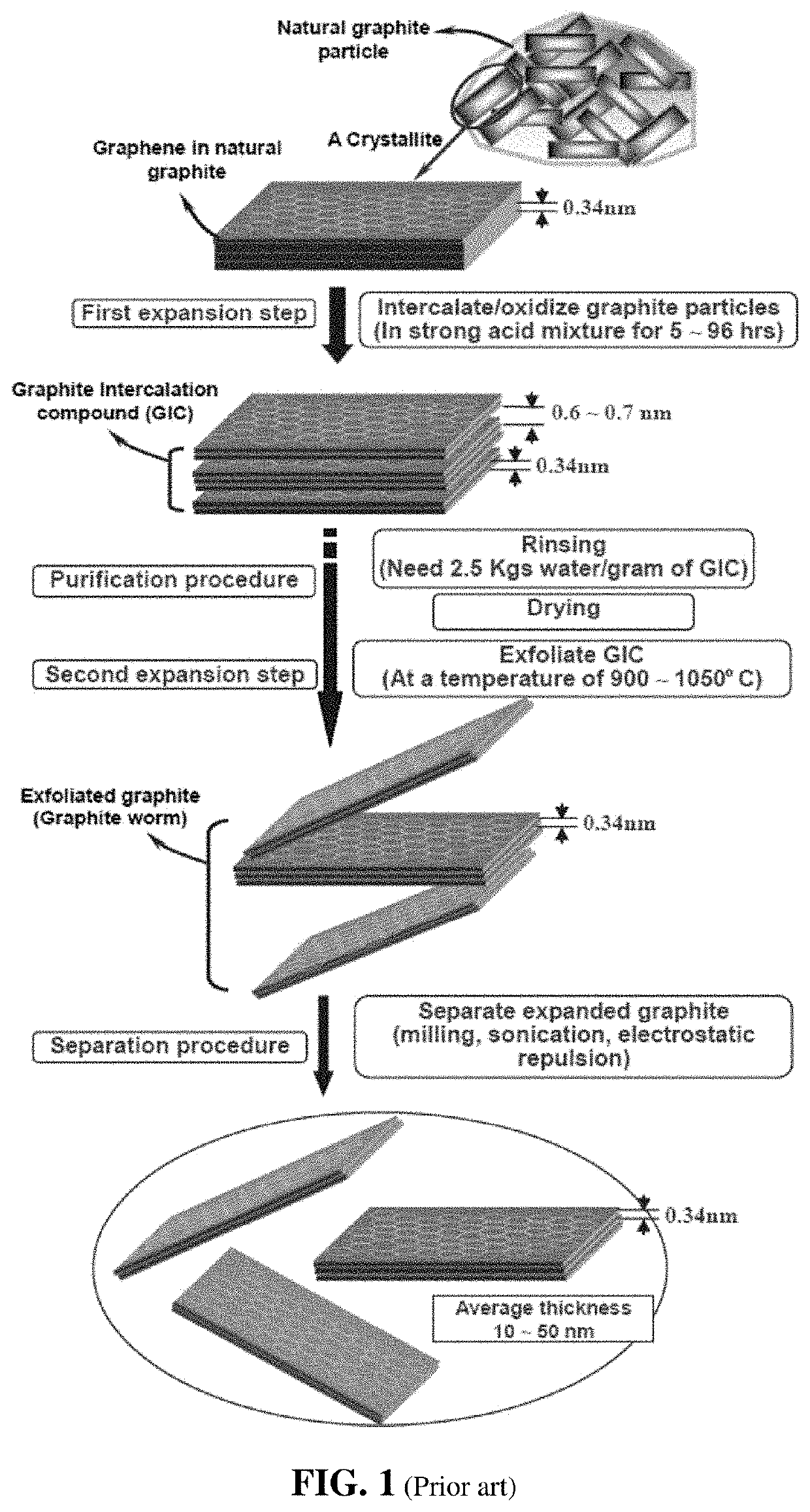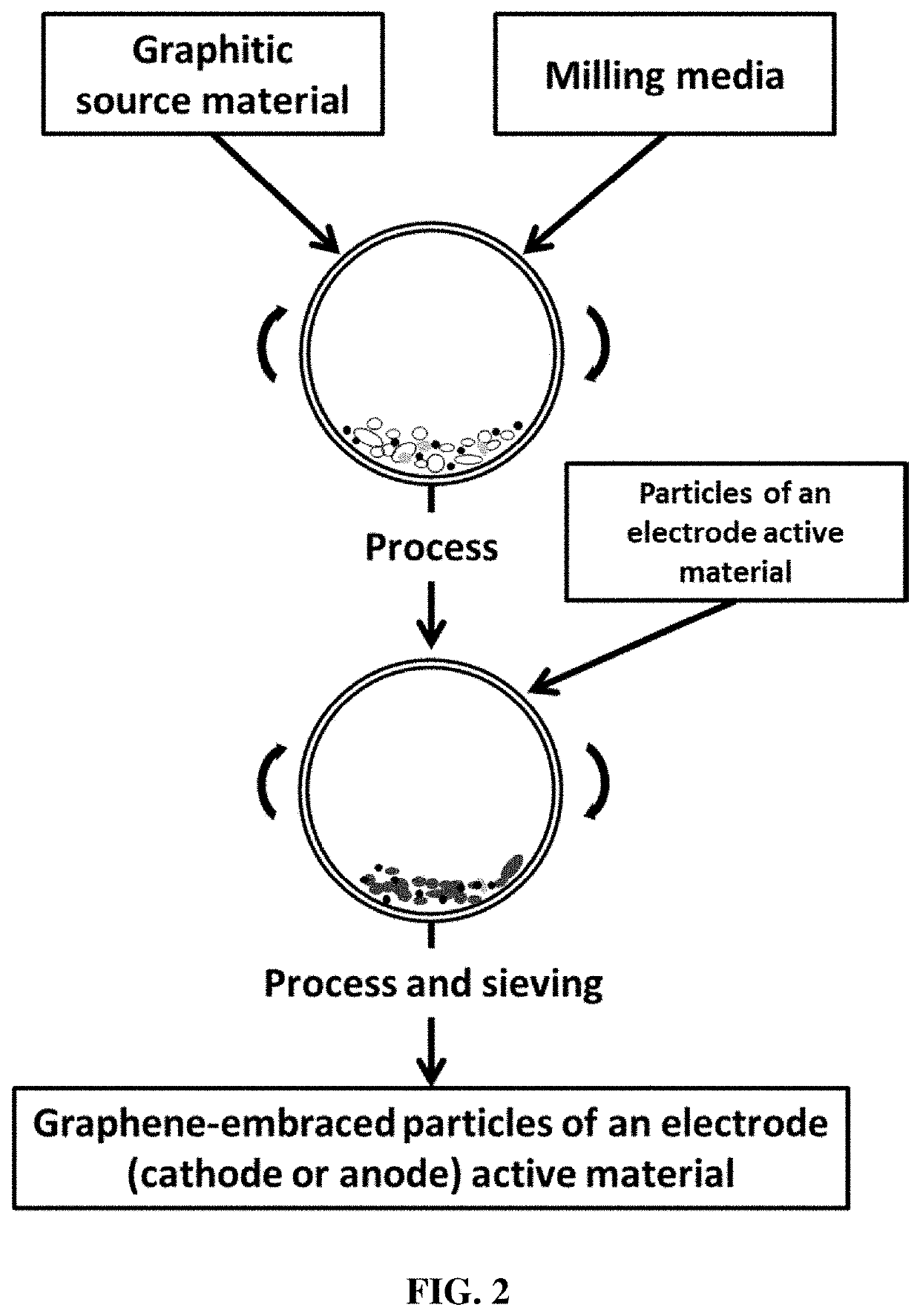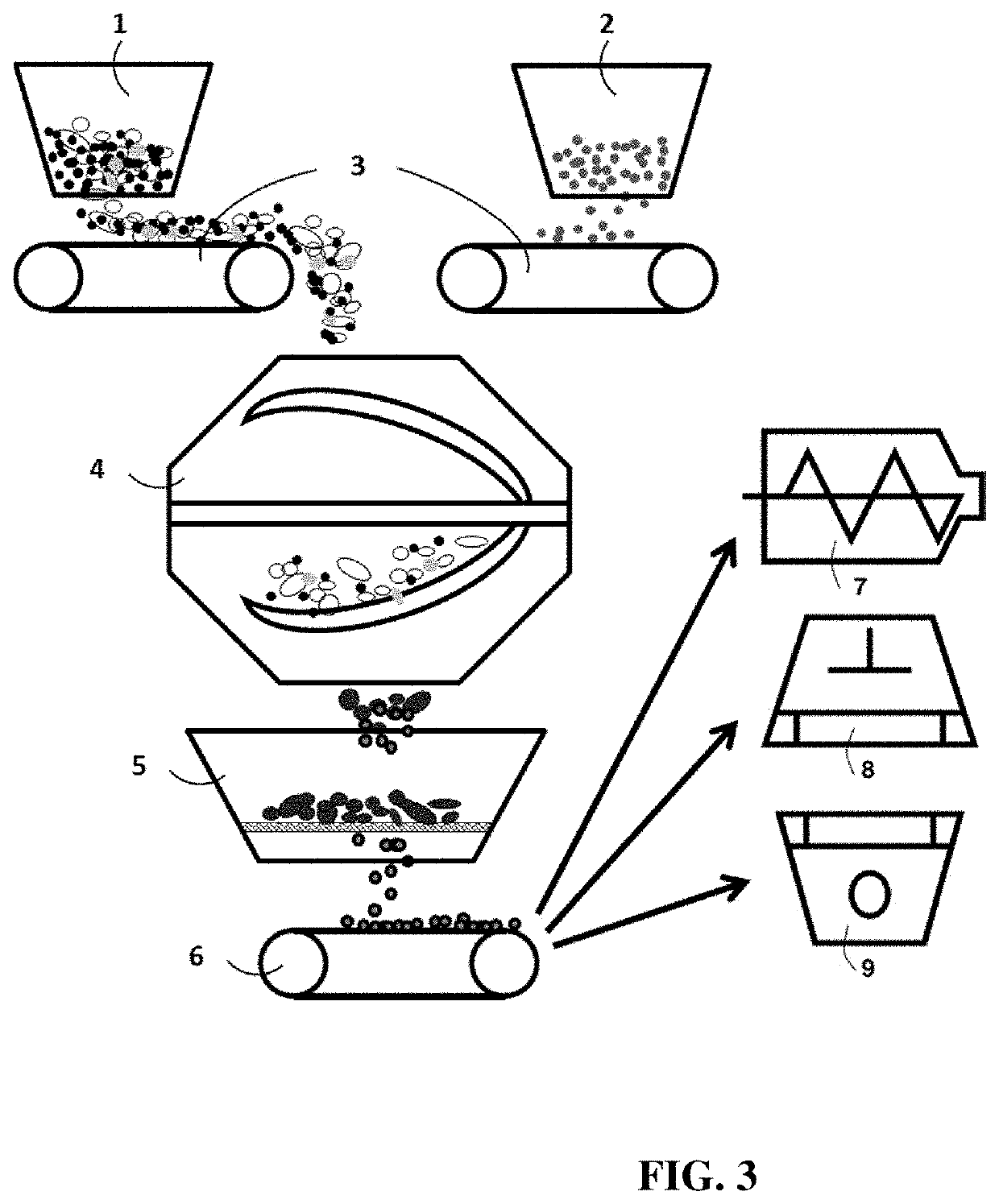Chemical-free production method of graphene-encapsulated electrode active material particles for battery applications
a technology of active materials and graphene, which is applied in the field of lithium batteries to achieve the effects of enhancing the lithium-capture and storage capability, improving the mechanical properties, electrical conductivity and thermal conductivity of the electrode, and improving the mechanical properties of the electrod
- Summary
- Abstract
- Description
- Claims
- Application Information
AI Technical Summary
Benefits of technology
Problems solved by technology
Method used
Image
Examples
example 1
Embraced Particles of Electrode Active Materials
[0134]Several types of electrode active materials (both anode and cathode active materials) in a fine powder form were investigated. These include Co3O4, Si, LiCoO2, LiMn2O4, lithium iron phosphate, etc., which are used as examples to illustrate the best mode of practice. These active materials either were prepared in house or were commercially available.
[0135]In a typical experiment, 100 grams of natural flake graphite, 50 mesh (average particle size 0.18 mm; Asbury Carbons, Asbury N.J.) and 1 kg of polyethylene terephthalate (PET) pellets were placed in a high-energy ball mill container. The ball mill was operated at 300 rpm for 0.5 to 4 hours. The container lid was then removed and PET pellets were found to be encapsulated by graphene sheets. Subsequently, the residual graphite particles were removed from the ball mill container. Then, 1 kg of electrode active material powder was added into the ball mill container having graphene-en...
example 3
Encapsulated Si Micron Particles
[0138]In a first experiment, 500 grams of SiO2 particles (as a ball milling medium) and 50 grams of highly oriented pyrolytic graphite (HOPG) were placed in a high-intensity ball mill. The mill was operated for 20 minutes, after which the container lid was opened and un-processed HOPG was removed by a 50 mesh sieve. It was observed that SiO2 particles were embraced with graphene sheets. Subsequently, graphene-coated SiO2 particles were separated from unused HOPG particles and mixed with 500 g of Si powder (particle diameter ˜3 μm) in a high-intensity ball mill, which was operated for a period from 5 minutes to 1 hour. The Si particles were coated with a dark layer, which was verified to be graphene by Raman spectroscopy.
[0139]In a second experiment, the same type of experiment was conducted with the exception that polyethylene-coated Si particles were used. Micron-scaled Si particles from the same batch were pre-coated with a layer of polyethylene (PE...
example 4
Embraced Ge Particles (Using Mesocarbon Microbeads, MCMBs, as the Graphene Source)
[0141]In one example, 200 grams of Zirconia (as a ball milling medium) and 10 grams of MCMBs (China Steel Chemical Co., Taiwan) were placed in a low-intensity ball mill, and processed for 5 minutes to 3 hours to obtain graphene-coated zirconia. Un-processed MCMB particles were removed by sieving, air classification, and settling in a solvent solution. A mixture of 500 grams of B-doped Ge powder (an anode active material) and 200 grams of graphene-coated zirconia were loaded into a ball milling chamber of a low-intensity ball mill, which was operated for 2-60 minutes to obtain graphene-embraced Ge particles having a graphene content from 0.0001% to 0.2% by weight.
PUM
 Login to View More
Login to View More Abstract
Description
Claims
Application Information
 Login to View More
Login to View More - R&D
- Intellectual Property
- Life Sciences
- Materials
- Tech Scout
- Unparalleled Data Quality
- Higher Quality Content
- 60% Fewer Hallucinations
Browse by: Latest US Patents, China's latest patents, Technical Efficacy Thesaurus, Application Domain, Technology Topic, Popular Technical Reports.
© 2025 PatSnap. All rights reserved.Legal|Privacy policy|Modern Slavery Act Transparency Statement|Sitemap|About US| Contact US: help@patsnap.com



